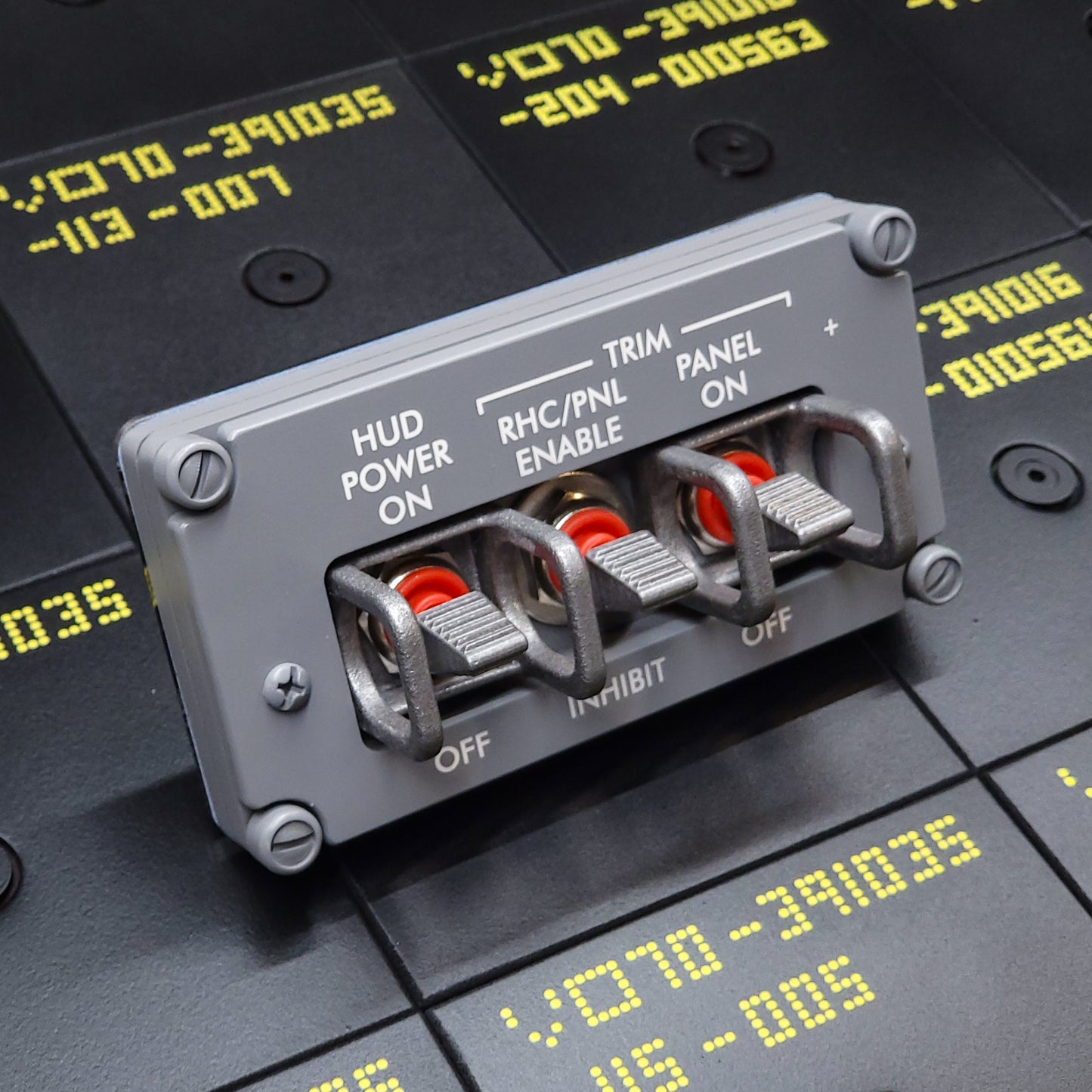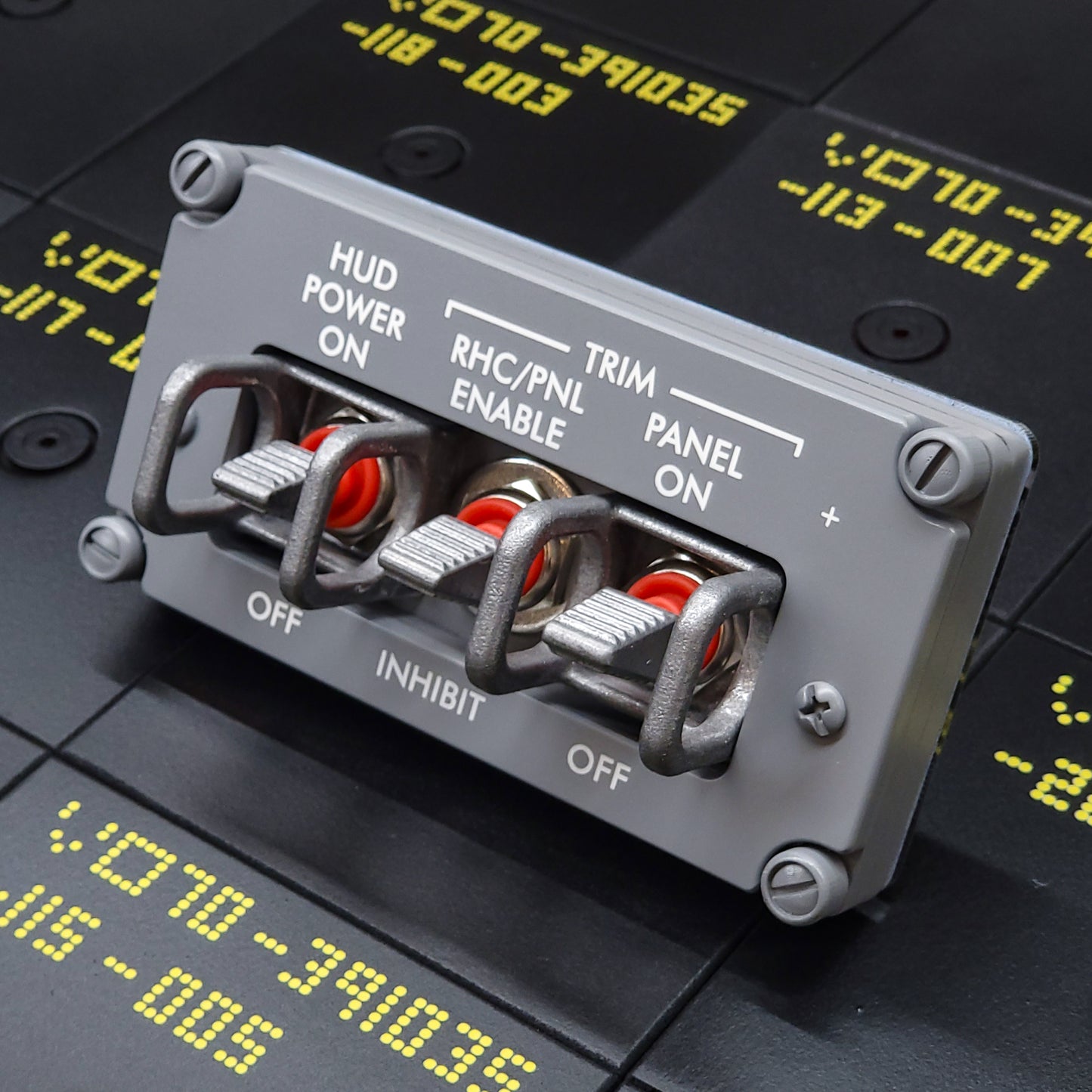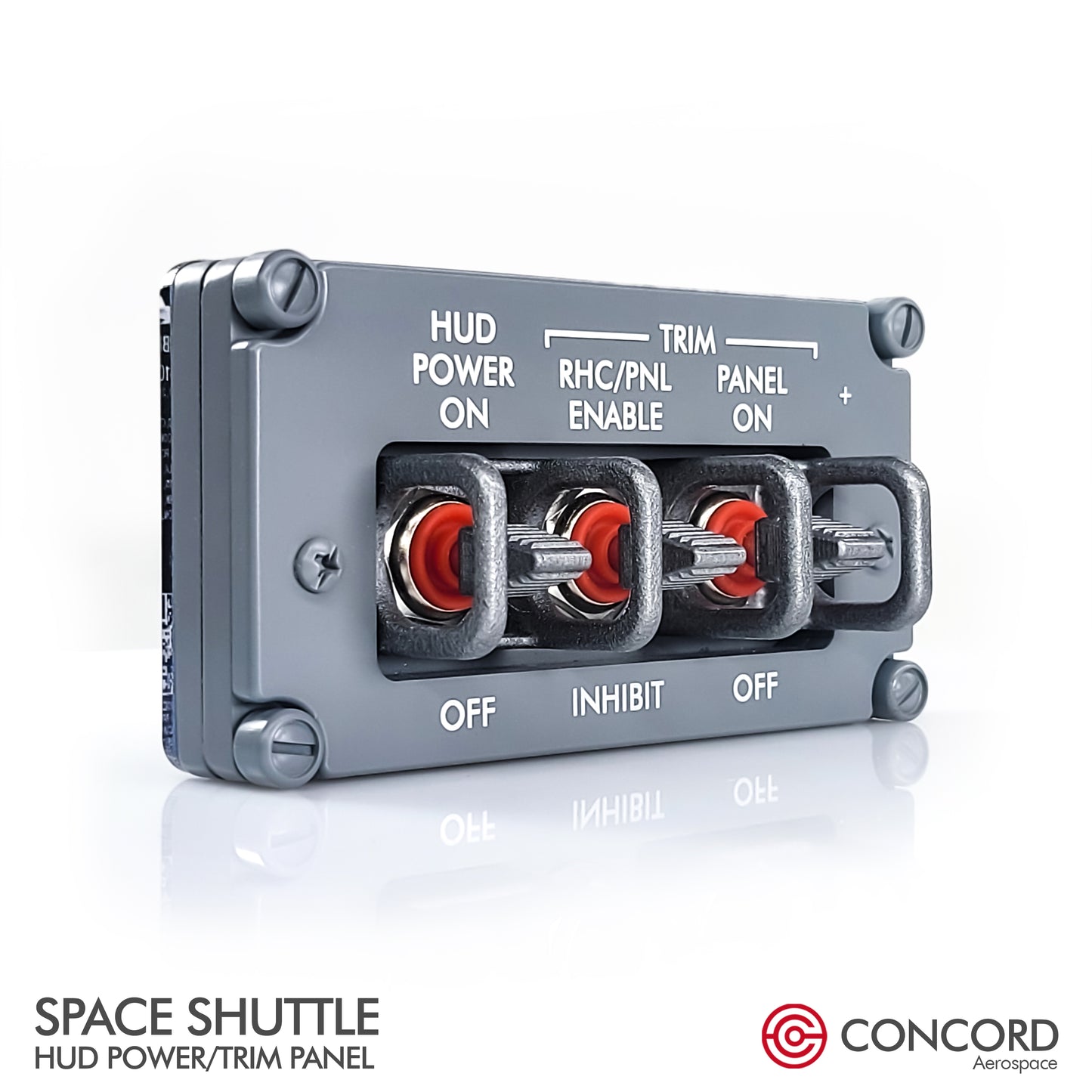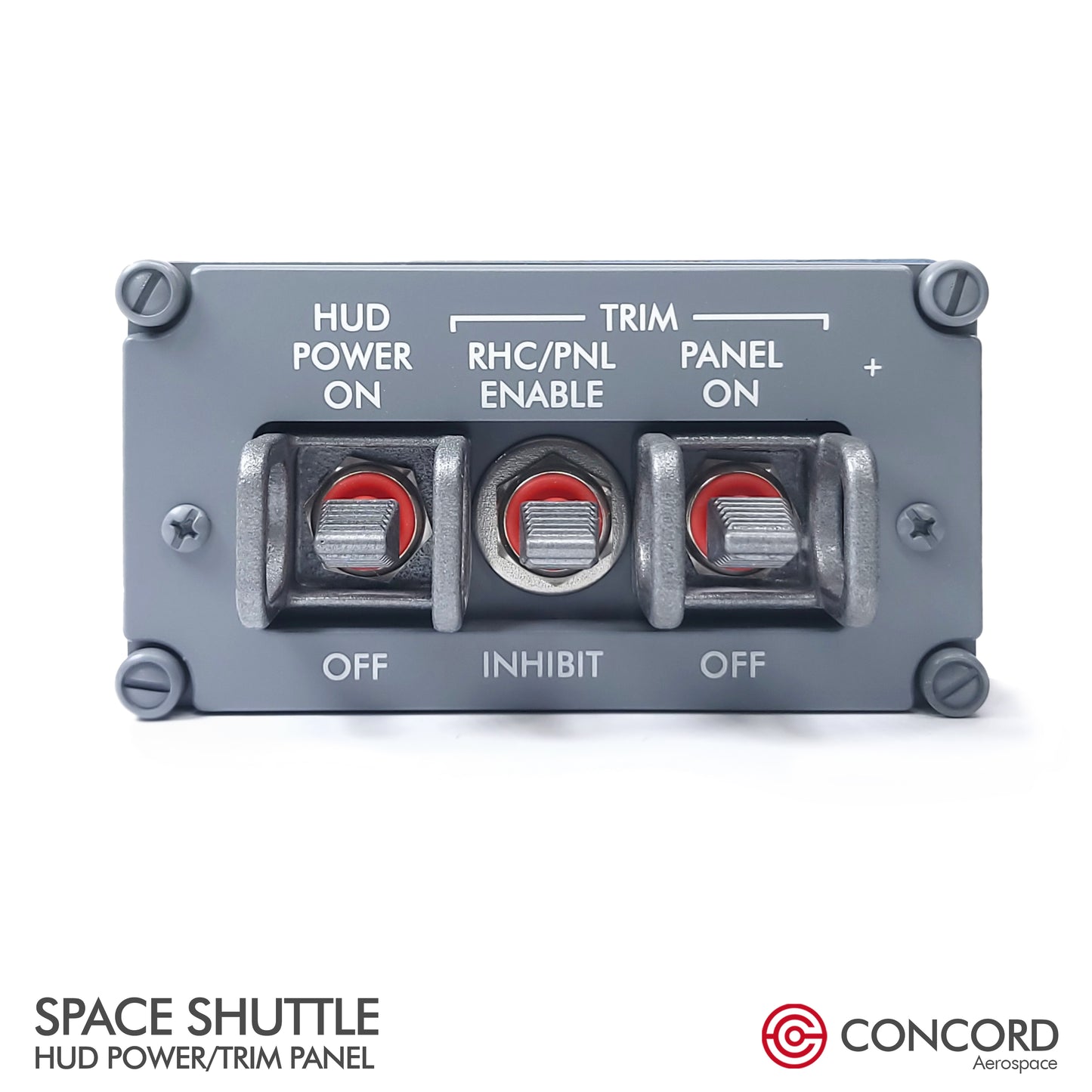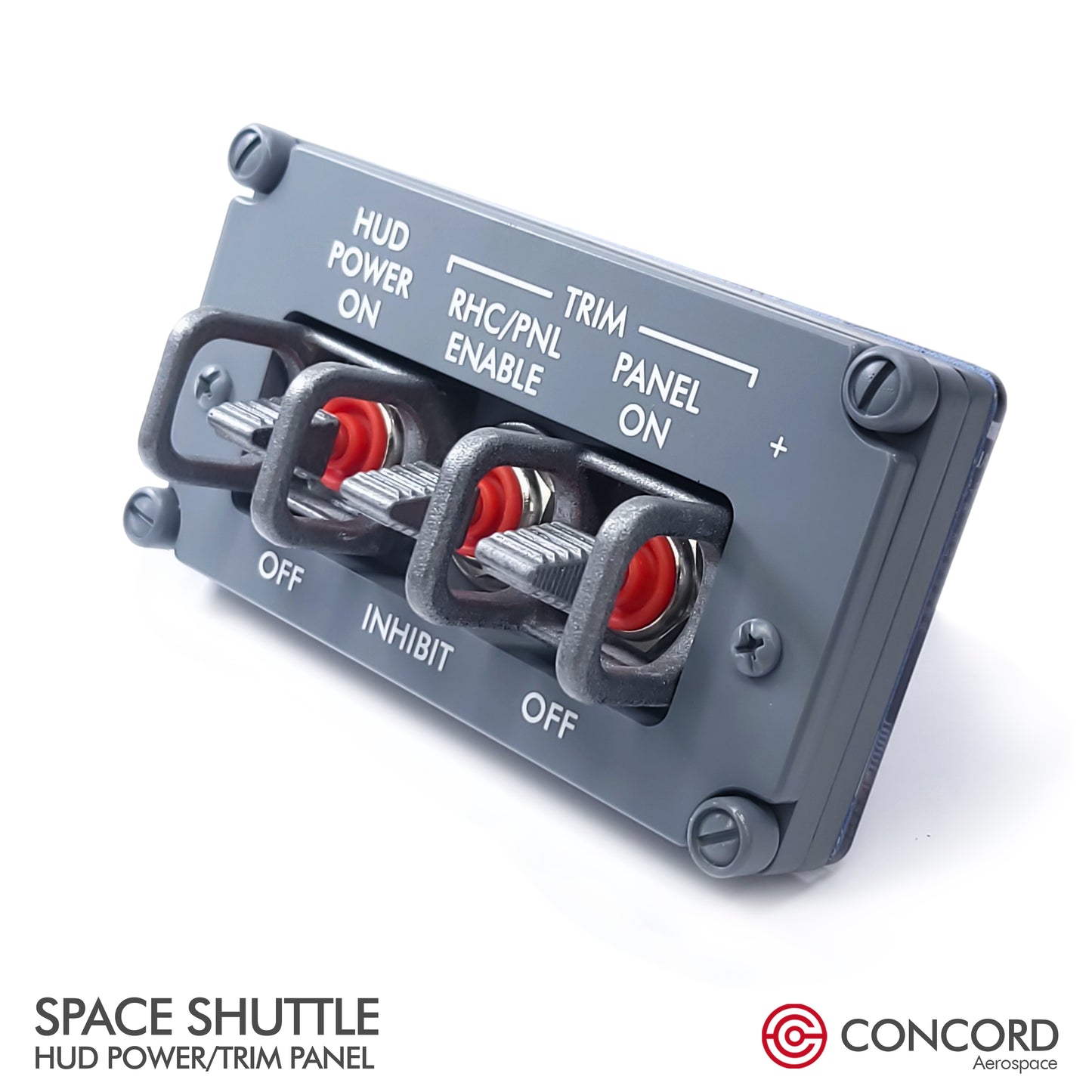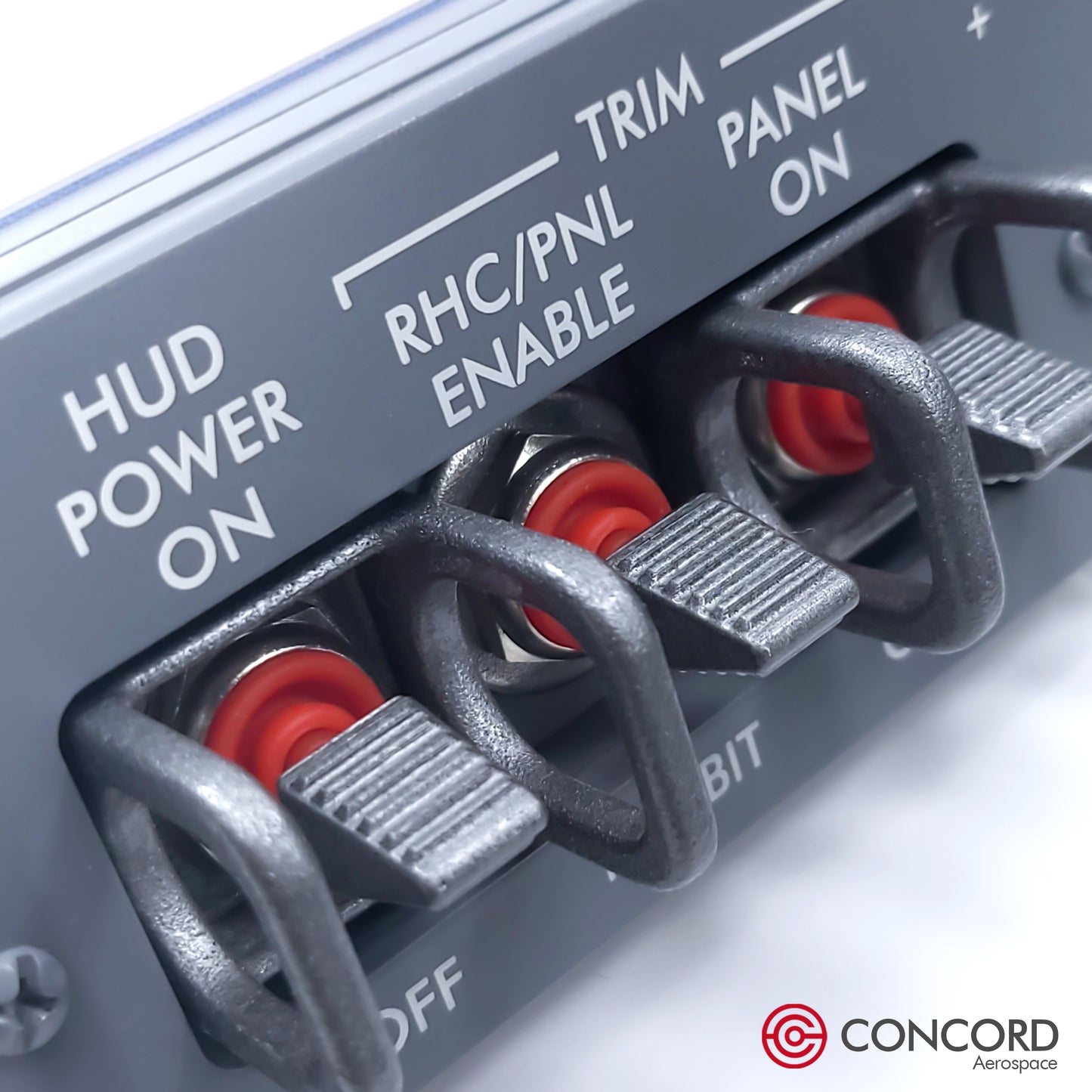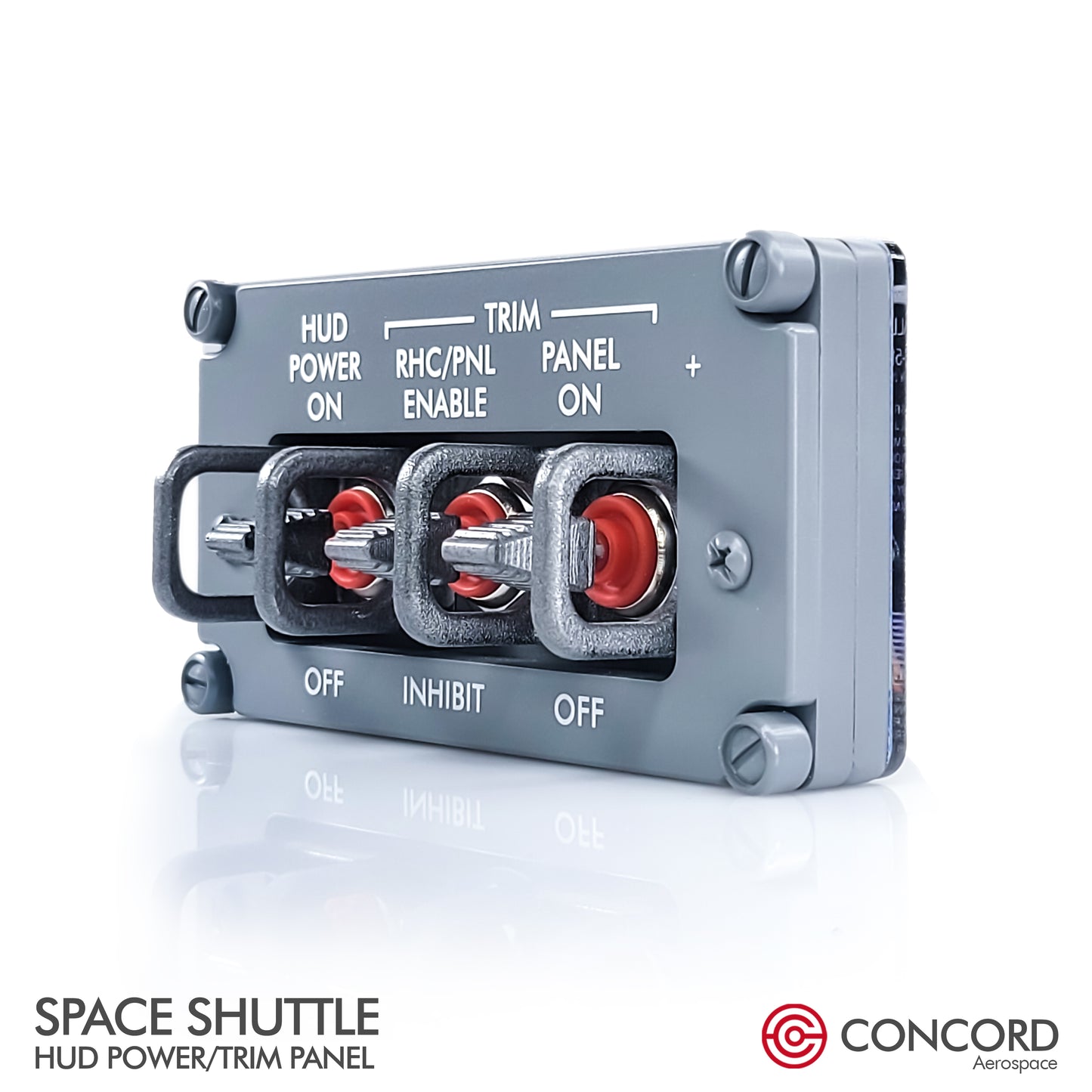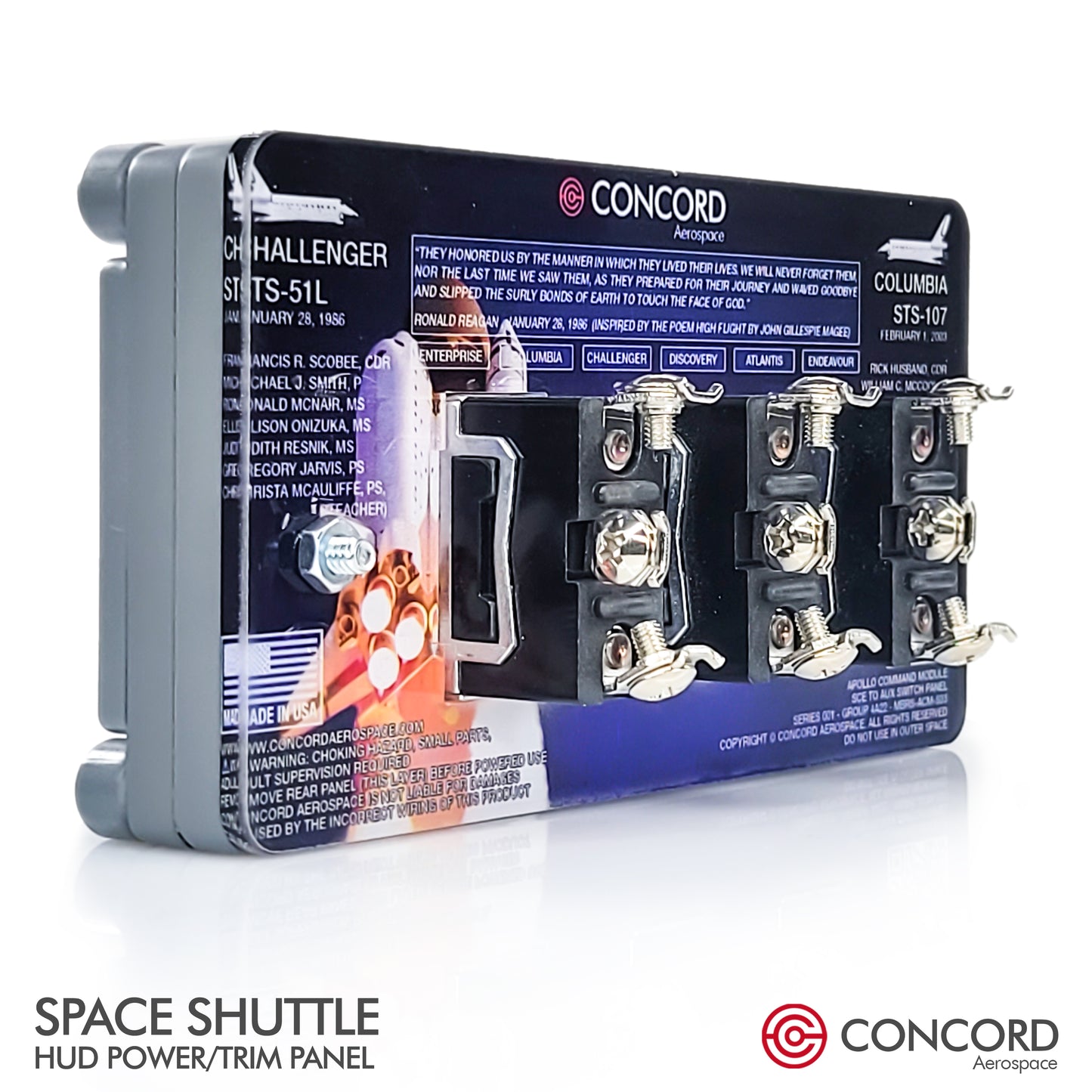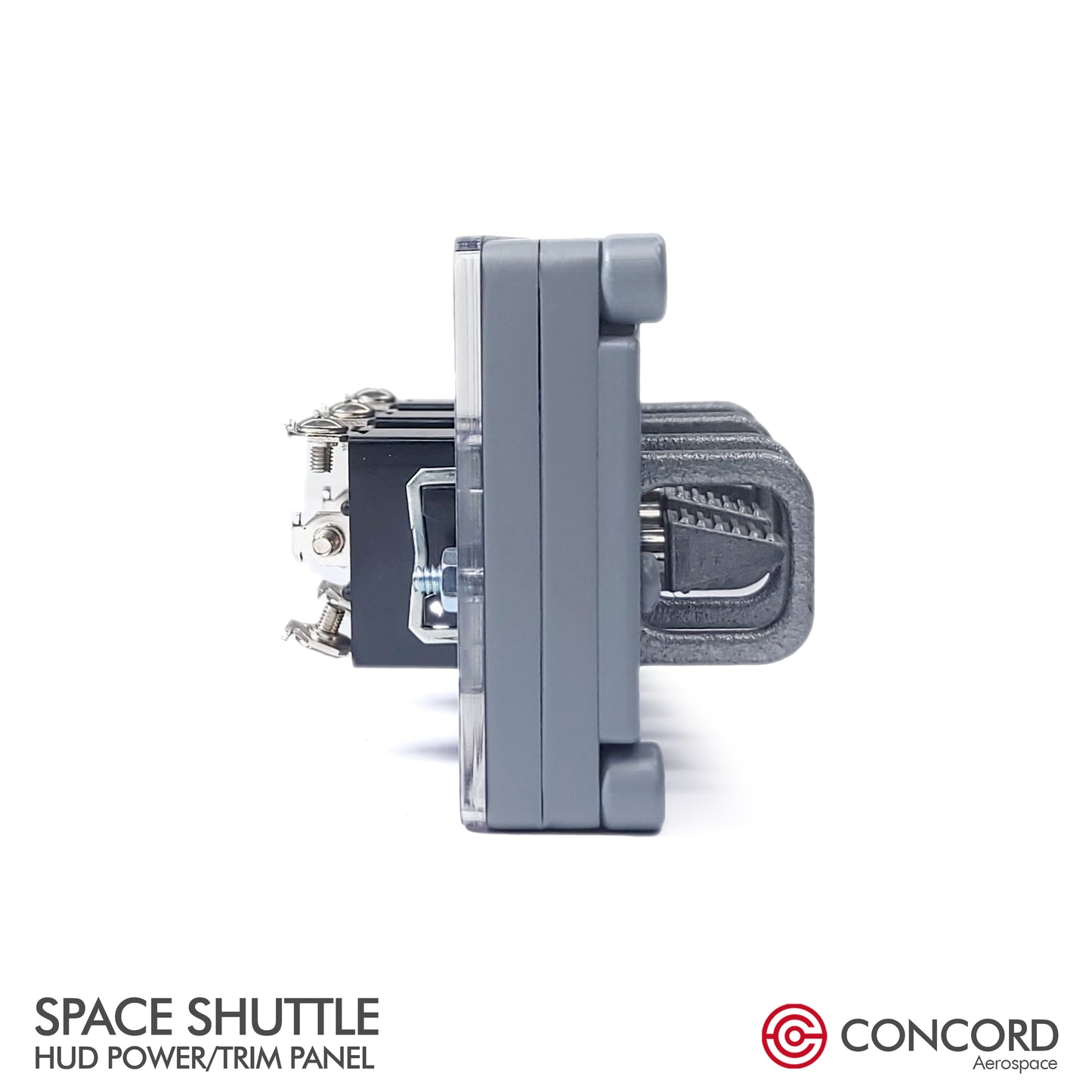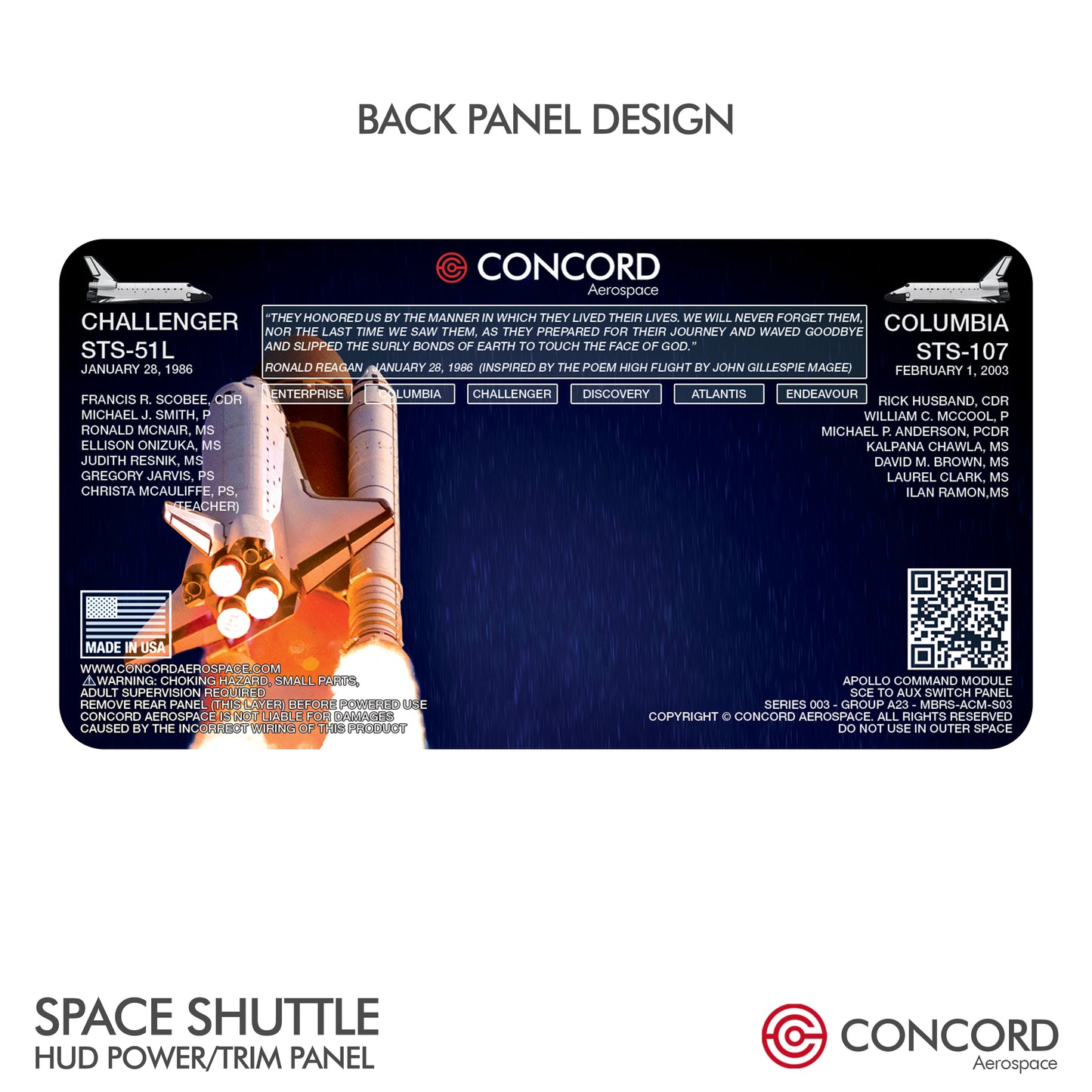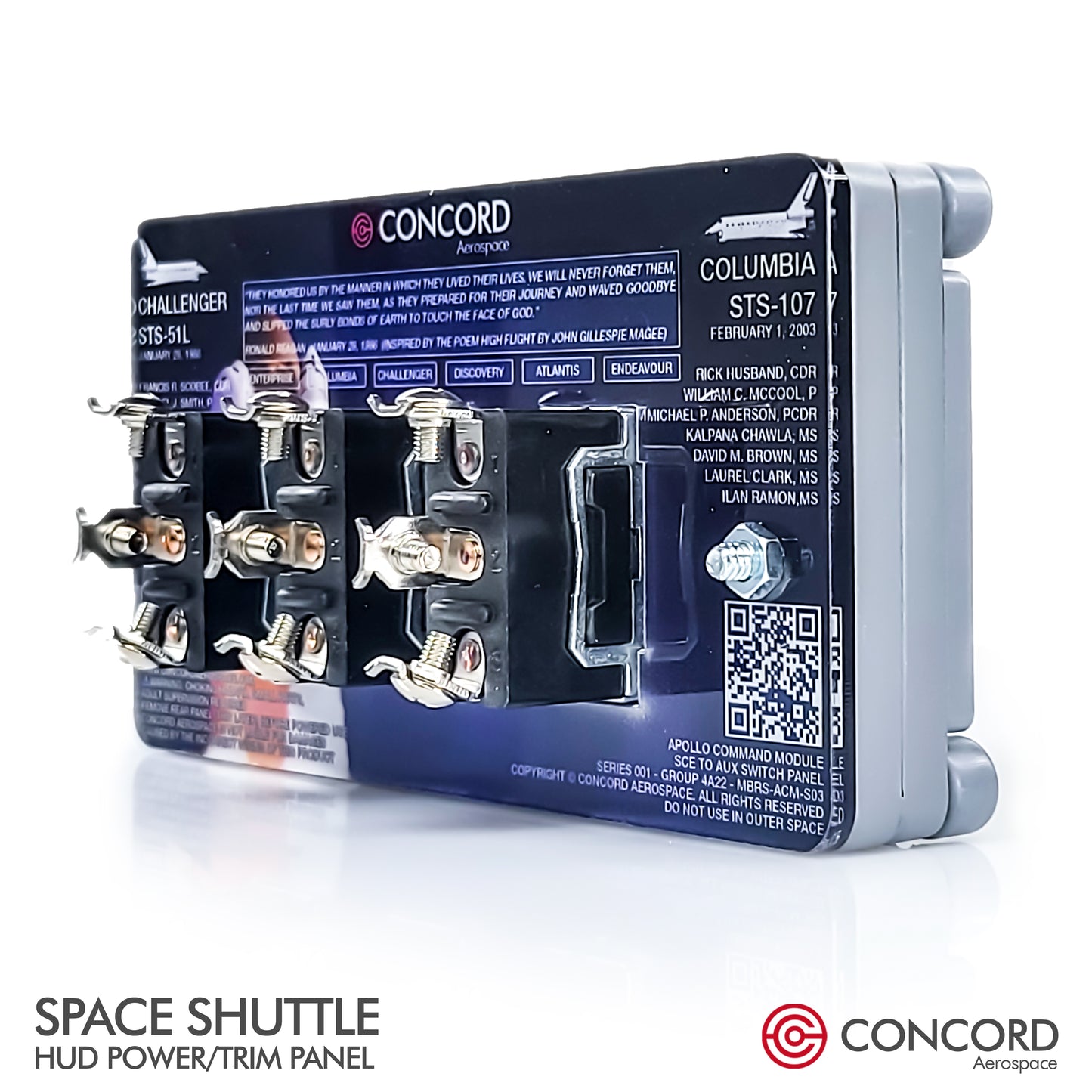SPACE SHUTTLE FLIGHTDECK PANEL - HUD POWER / TRIM
SPACE SHUTTLE FLIGHTDECK PANEL - HUD POWER / TRIM
Couldn't load pickup availability
HUD POWER / TRIM PANEL
Specially printed rear panel dedication in memory of the crews of Challenger and Columbia. The design includes the names of the fallen heroes and mission information of the two tragic missions of the Shuttle Program along with a quote from President Reagan's address to the nation after the Challenger accident.
TECHNICAL DETAILS
- Multi-layer switch assembly.
- Three Real / Operable heavy-duty toggle switch. (20A-125VAC / 15A-250VAC).
- SPDT (ON-OFF-ON) Switch Configuration
- Accurately sized Space Shuttle switch guards and switch caps with metallic finish and realistic texture.
- Custom fabricated toggle red switch boots.
- Reproduction DZUS for enhanced visuals.
- Fully printed rear panel.
- 6" x 3" x 3"
- Designed and manufactured in USA.
- Ships within 3-5 days. Custom manufactured item.
A great gift for any Space Enthusiast and collector.
HISTORY
The Space Shuttle was a partially reuseable low Earth orbital spacecraft system operated from 1981 to 2011 by NASA as part of the Space Shuttle Program. Its official program name was Space Transportation System (STS).
The crew compartment comprised three decks, and was the pressurized, habitable area on all Space Shuttle missions. The flight deck consisted of two seats for the commander and pilot, as well as an additional two to four seats for crew members. The instrument panels contained over 2,100 displays and controls, and the commander and pilot were both equipped with a heads-up display (HUD) integral during the approach and landing phase of the missions.
DEDICATIONEvery component we produce for our Space Shuttle projects is dedicated to the brave crews of Challenger and Columbia who have made the ultimate sacrifice so that others can reach the stars.
Challenger:
The NASA space shuttle Challenger exploded on January 28, 1986, just 73 seconds after liftoff, bringing a devastating end to the spacecraft’s 10th mission. The disaster claimed the lives of all seven astronauts aboard, including Christa McAuliffe, a teacher from New Hampshire who would have been the first civilian in space. It was later determined that two rubber O-rings, which had been designed to seal the sections of the rocket booster, had failed due to cold temperatures on the morning of the launch. The tragedy and its aftermath received extensive media coverage and prompted NASA to temporarily suspend all shuttle missions.
Columbia:
On February 1, 2003, the Space Shuttle Columbia broke apart during reentry resulting in loss of seven crewmembers and craft. The accident was caused by a breach in the left wing leading edge thermal protection system initiated by the impact of thermal insulating foam that had separated from the orbiters external fuel tank 81 seconds into that mission's launch. During reentry, this breach allowed superheated air to penetrate behind the leading edge and erode the aluminum structure of the left wing which ultimately led to the breakup of the orbiter.
DISCLAIMER
By accessing, purchasing or utilizing any product & services provided by Concord Aerospace, the client acknowledges and accepts that such utilization is subject to the client's own judgment and at their own risk. The client fully assumes all responsibilities for any installation, maintenance or use of these products. The client understands that any installation or use of these products may pose risks, including but not limited to the risk of electrical shock, injury, or damage to equipment and the installation environment. In applications that require power, it is recommended that a professional installation be carried out to minimize any risks of injury or damage resulting from improper installation or use of all Concord Aerospace products.
SHARE SPACE SHUTTLE FLIGHTDECK PANEL - HUD POWER / TRIM
